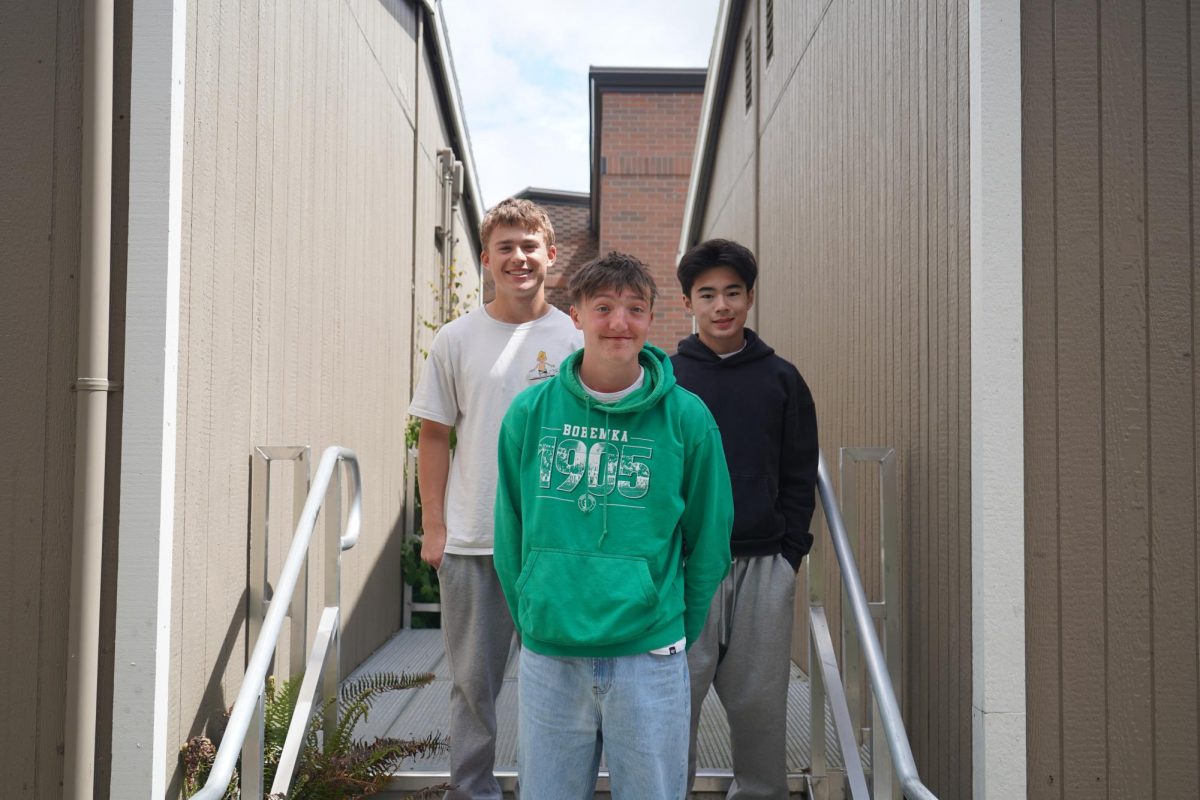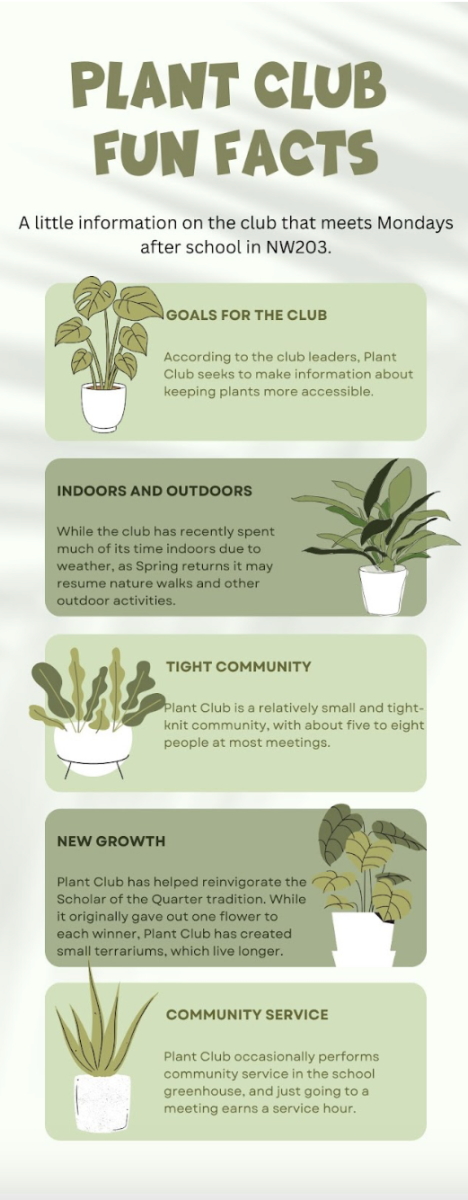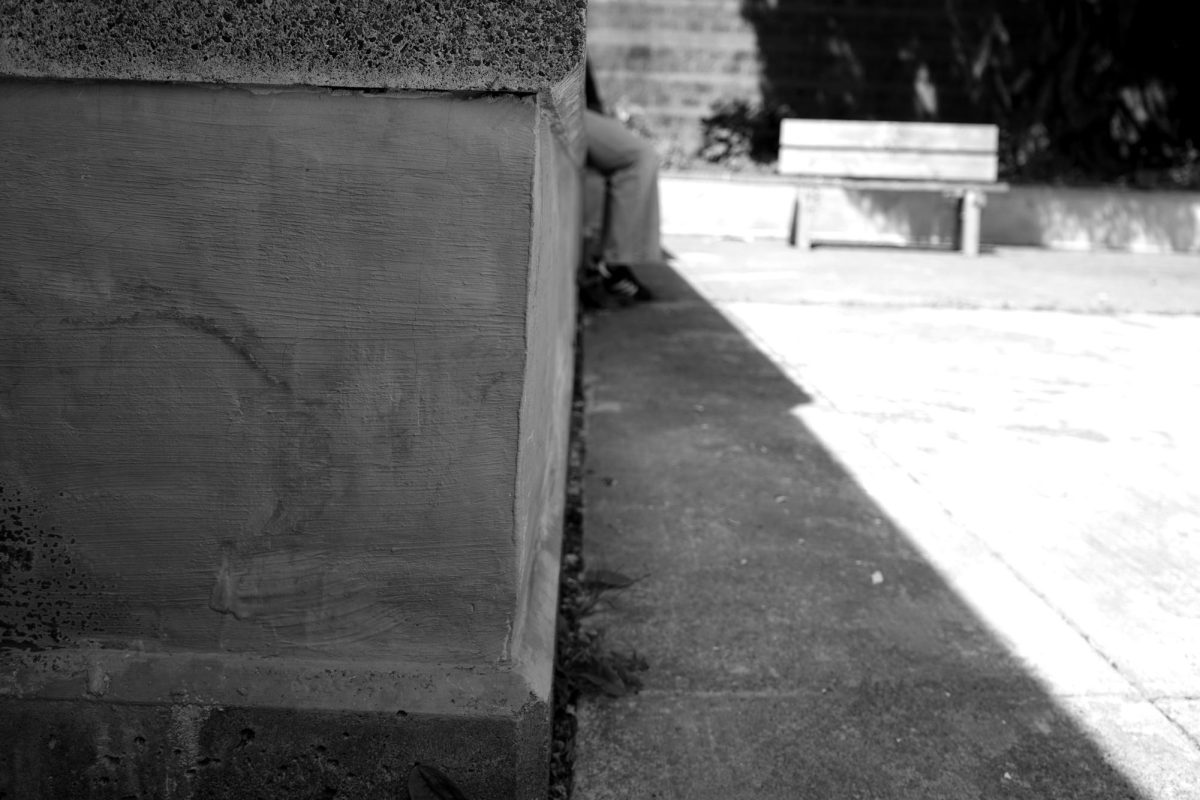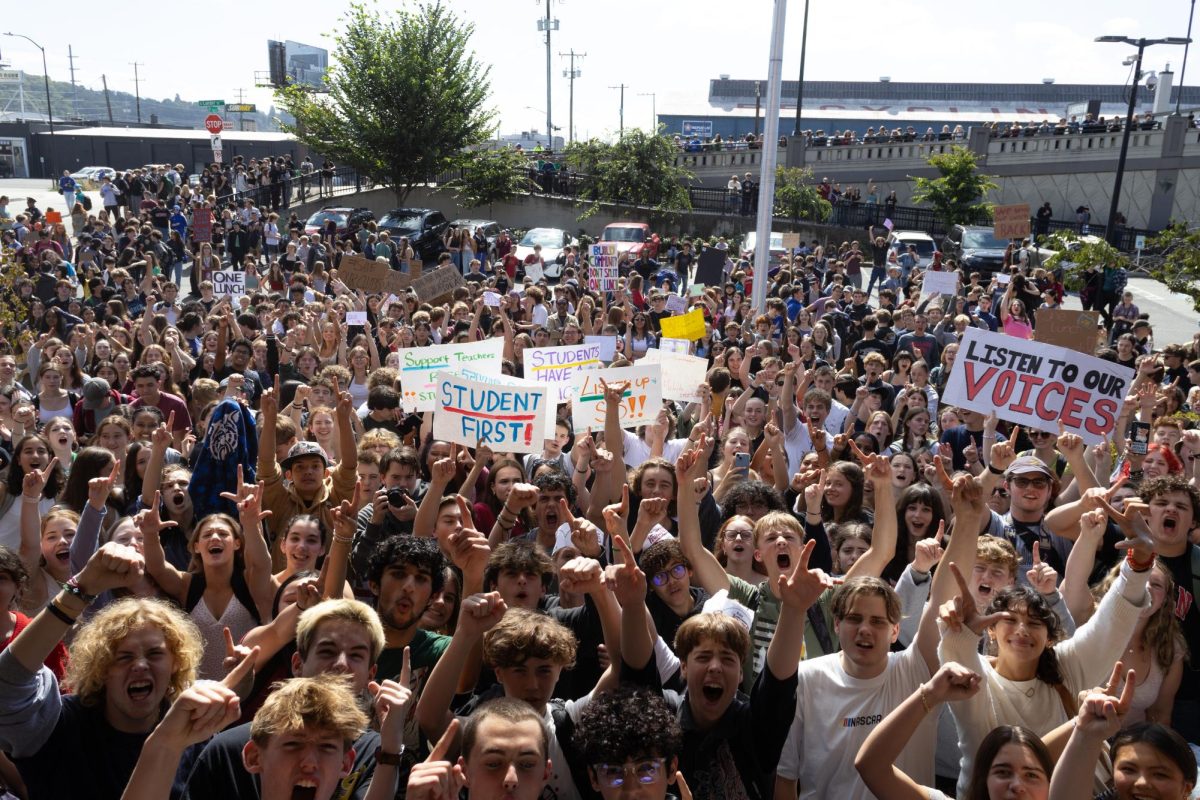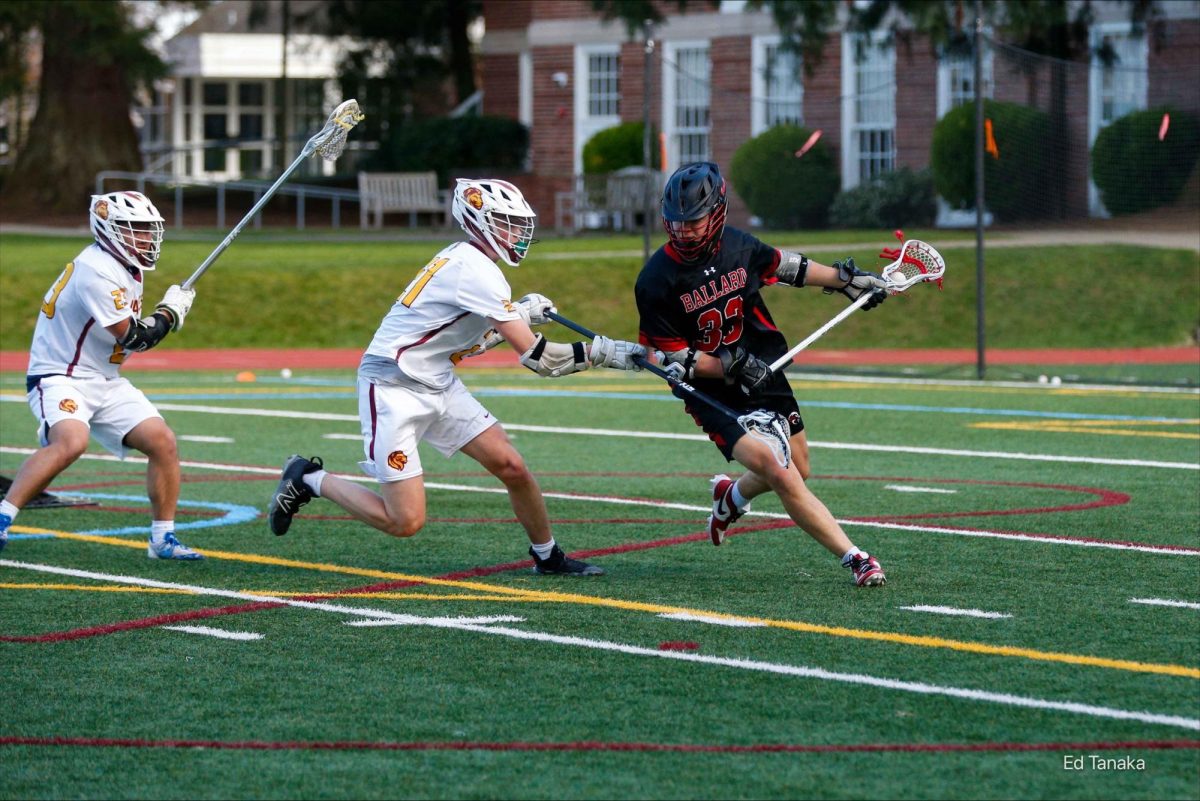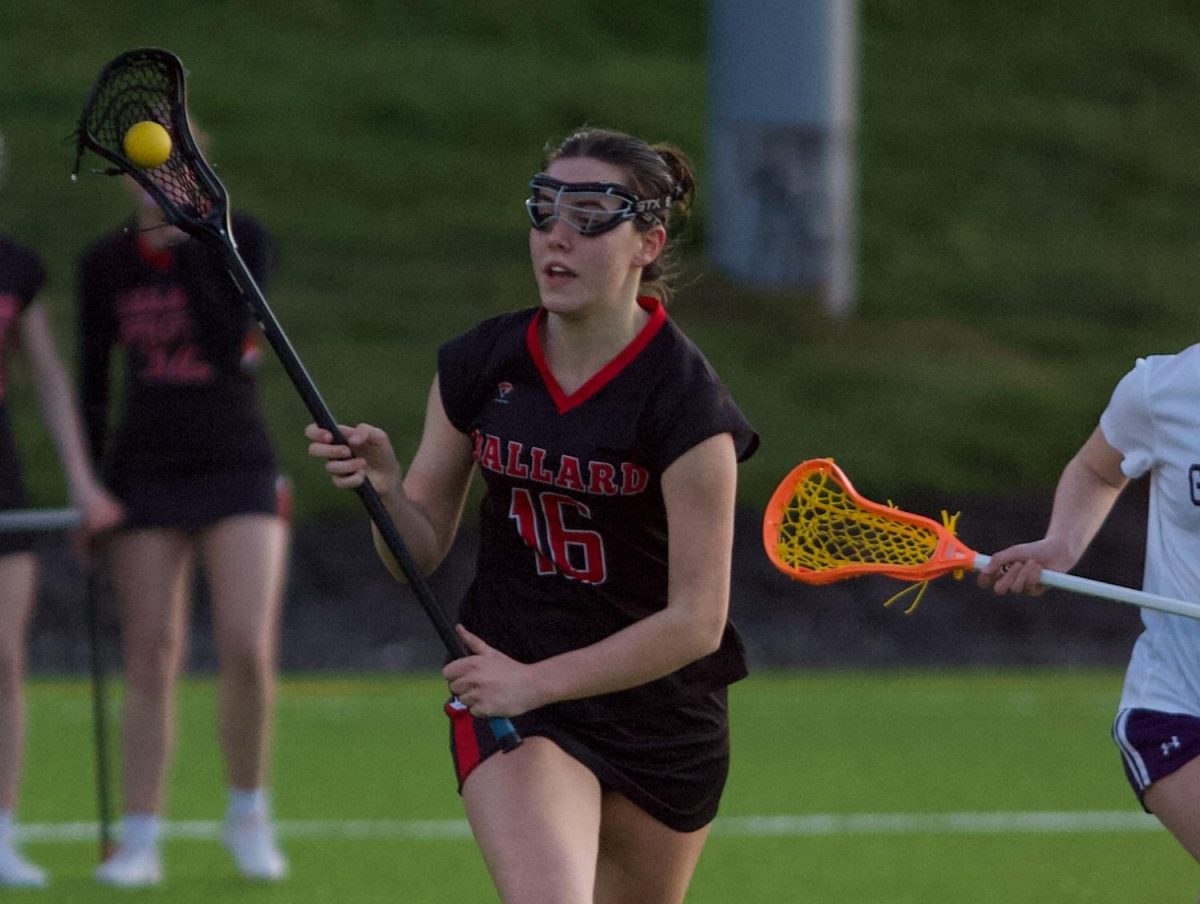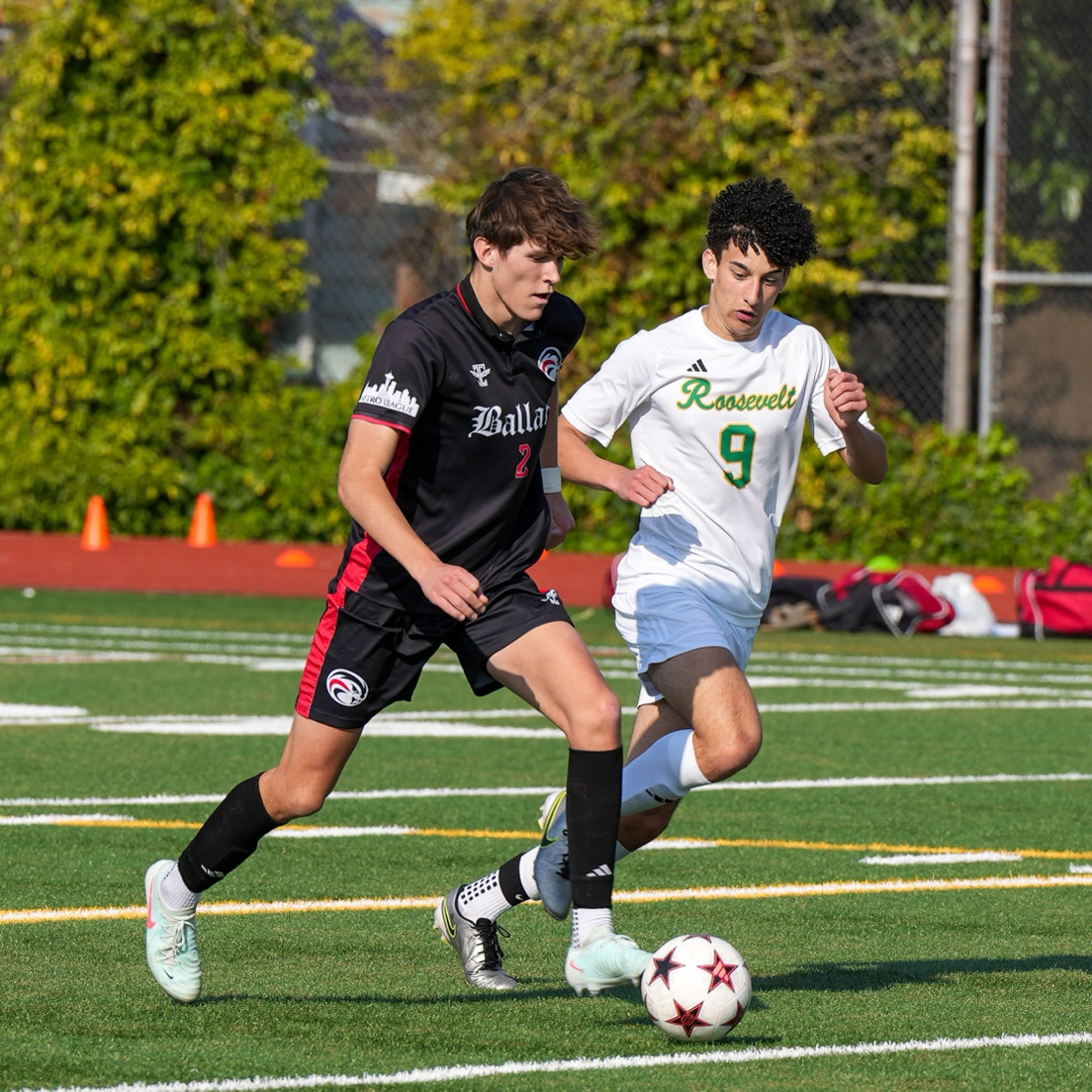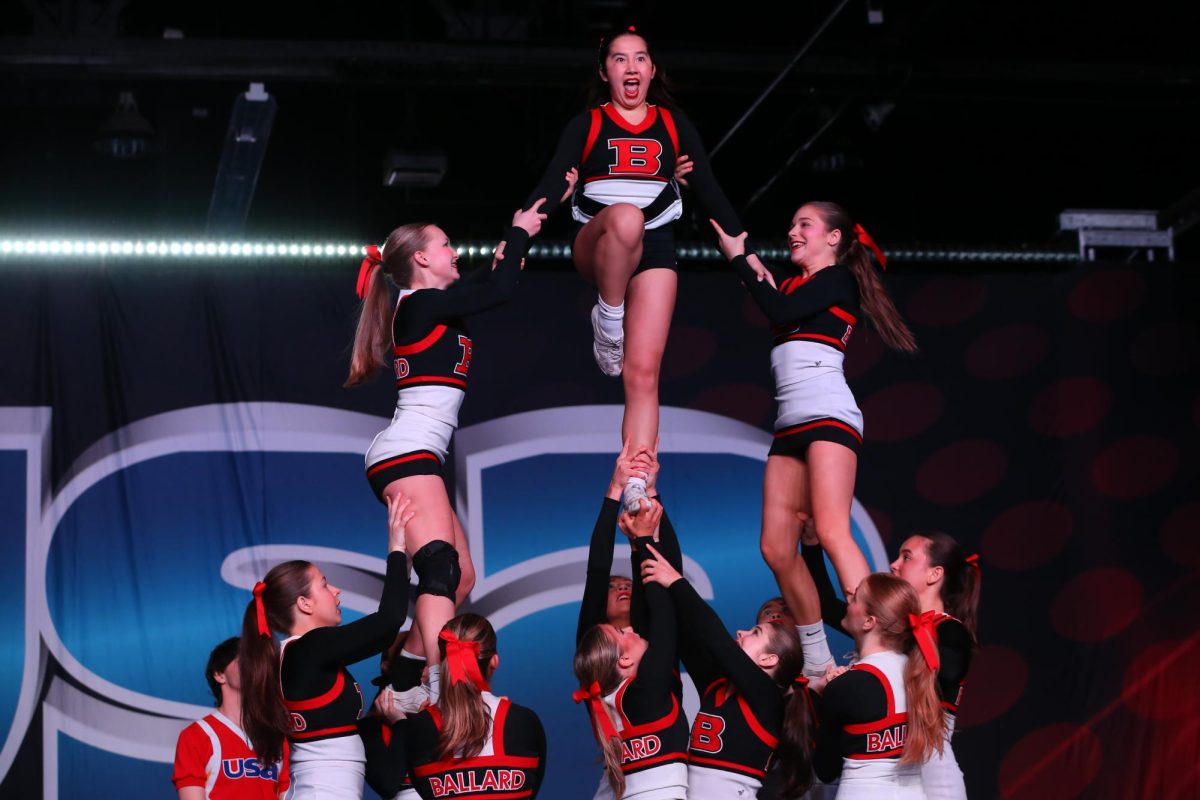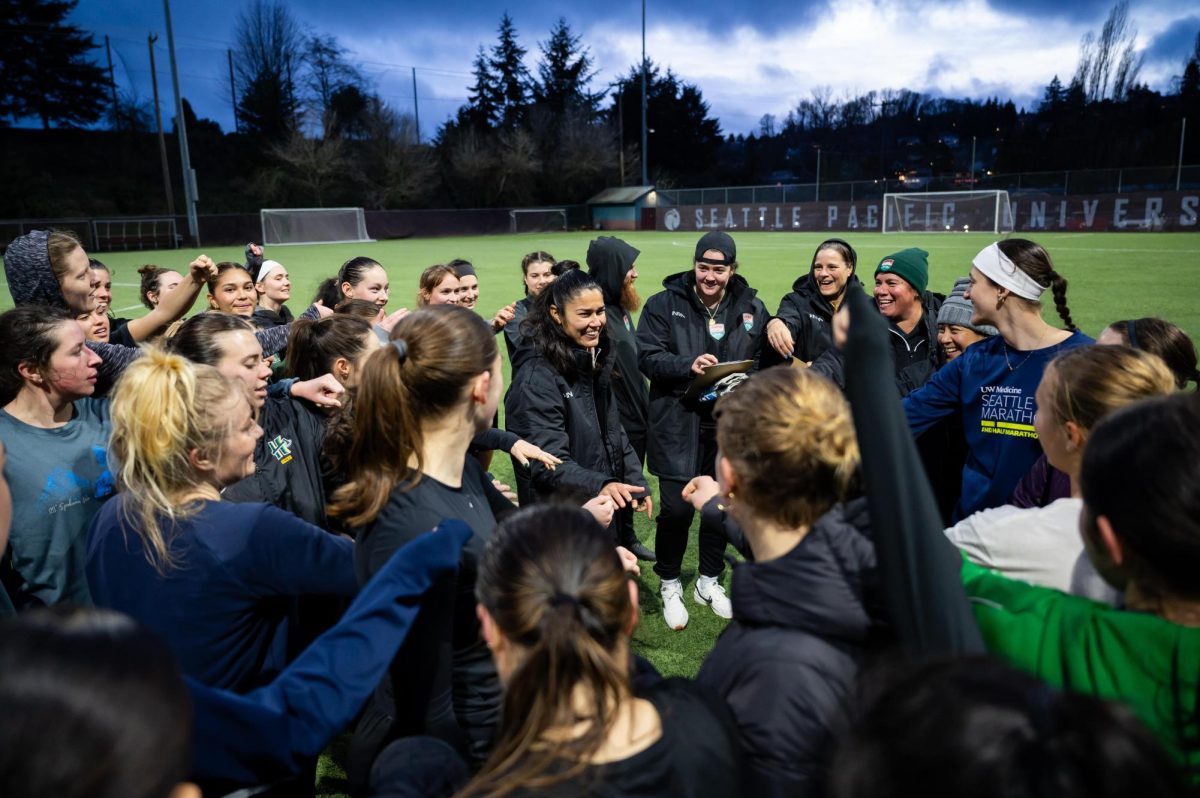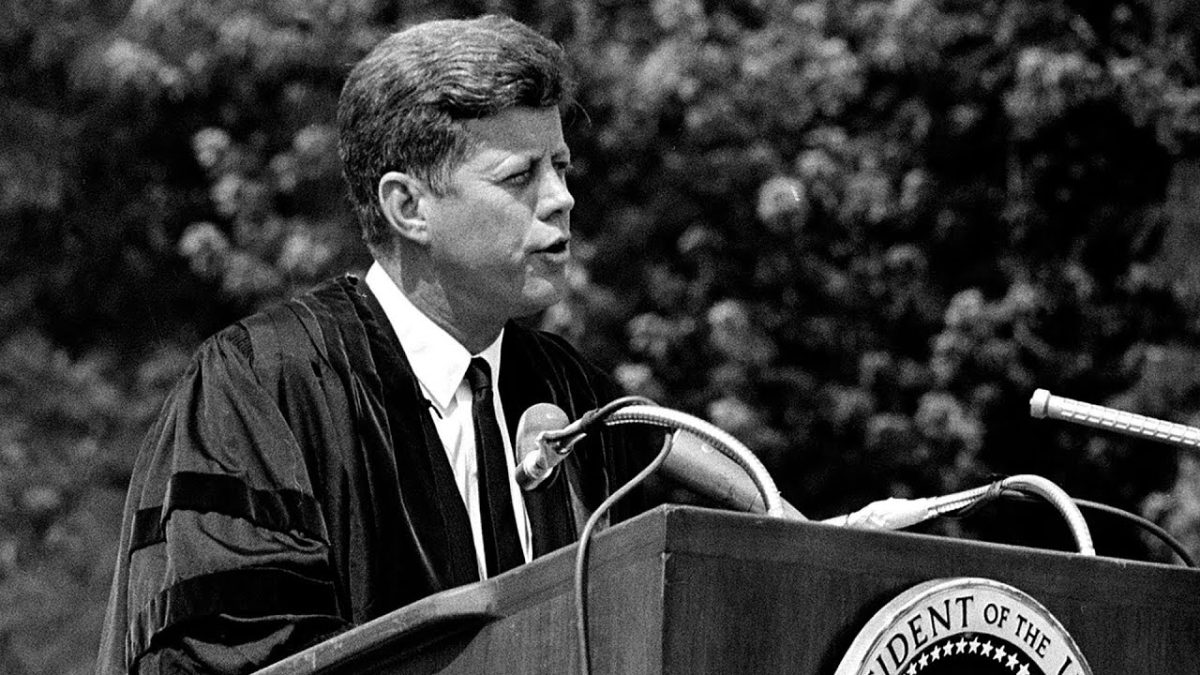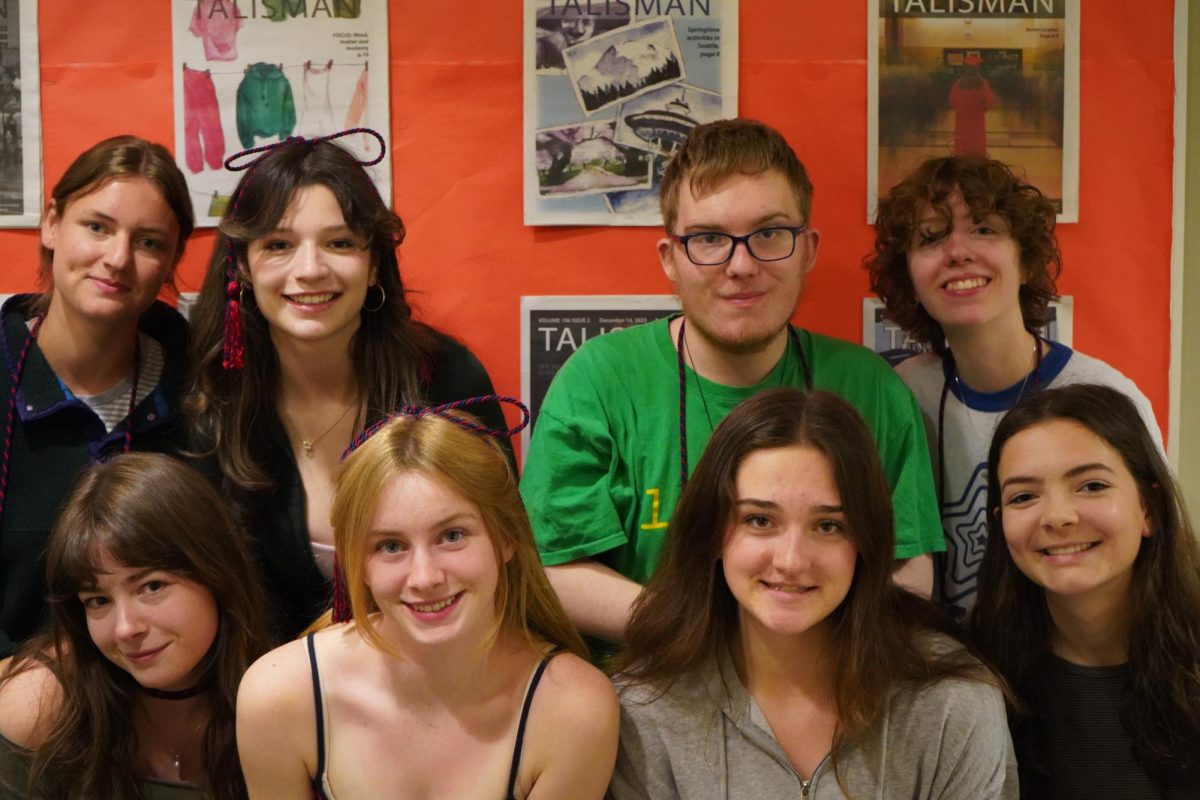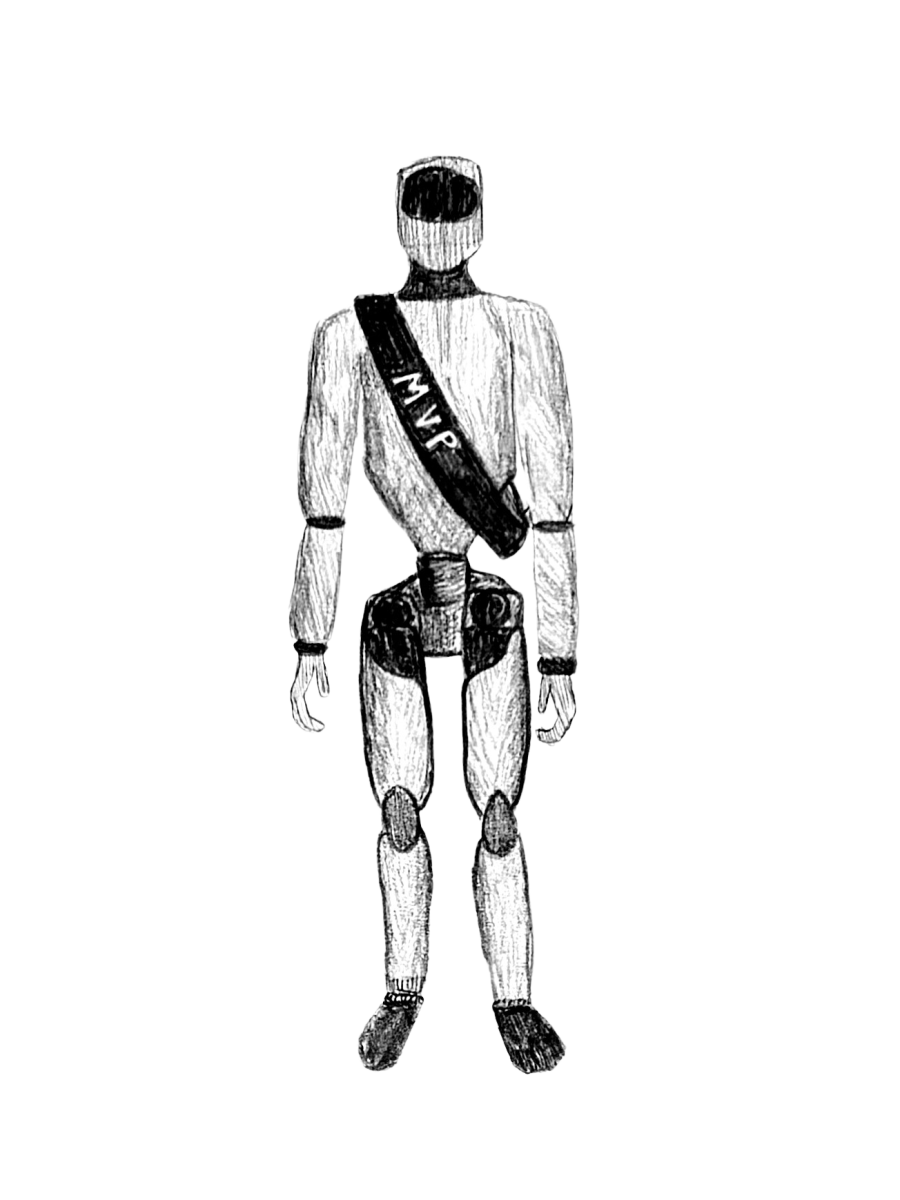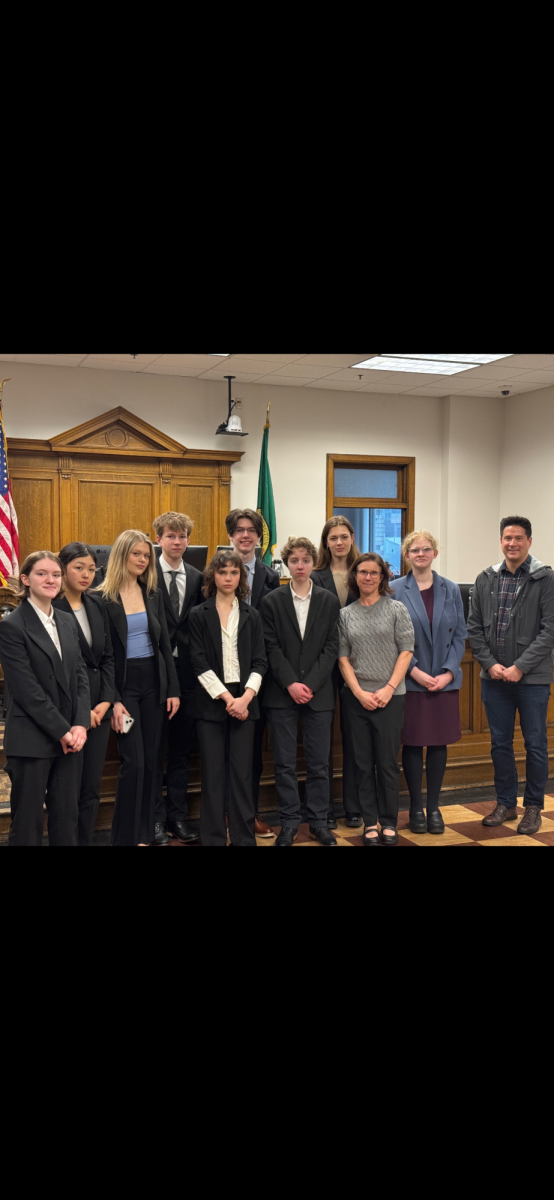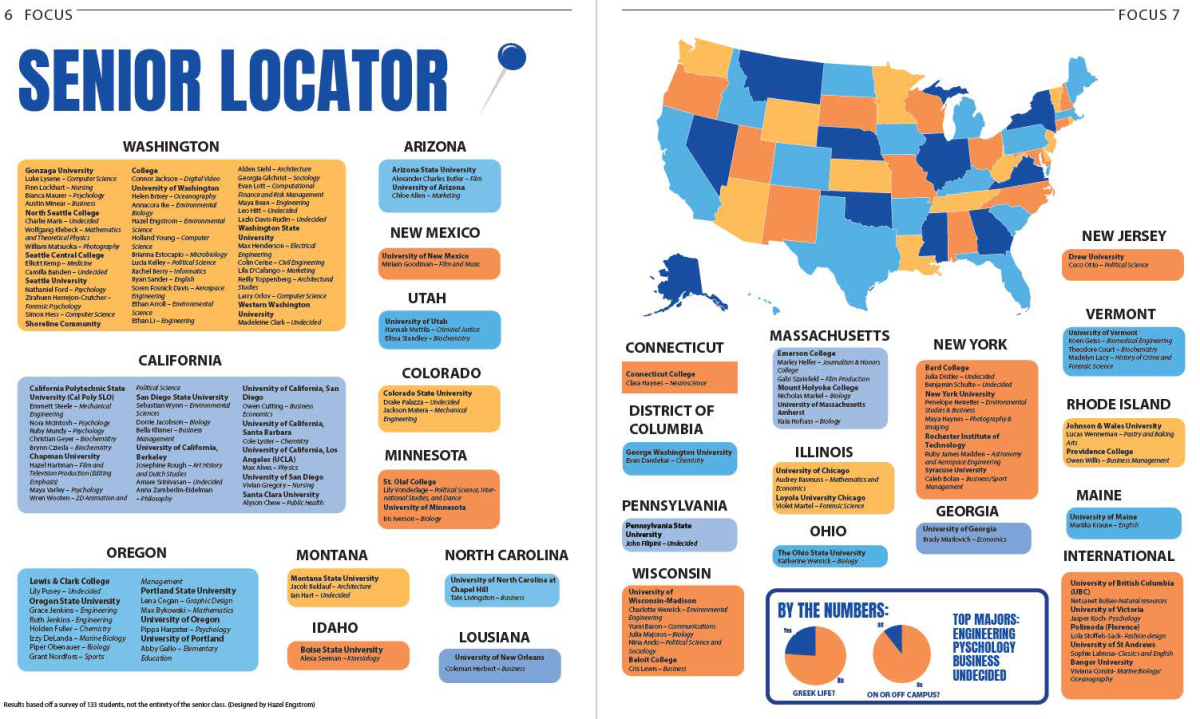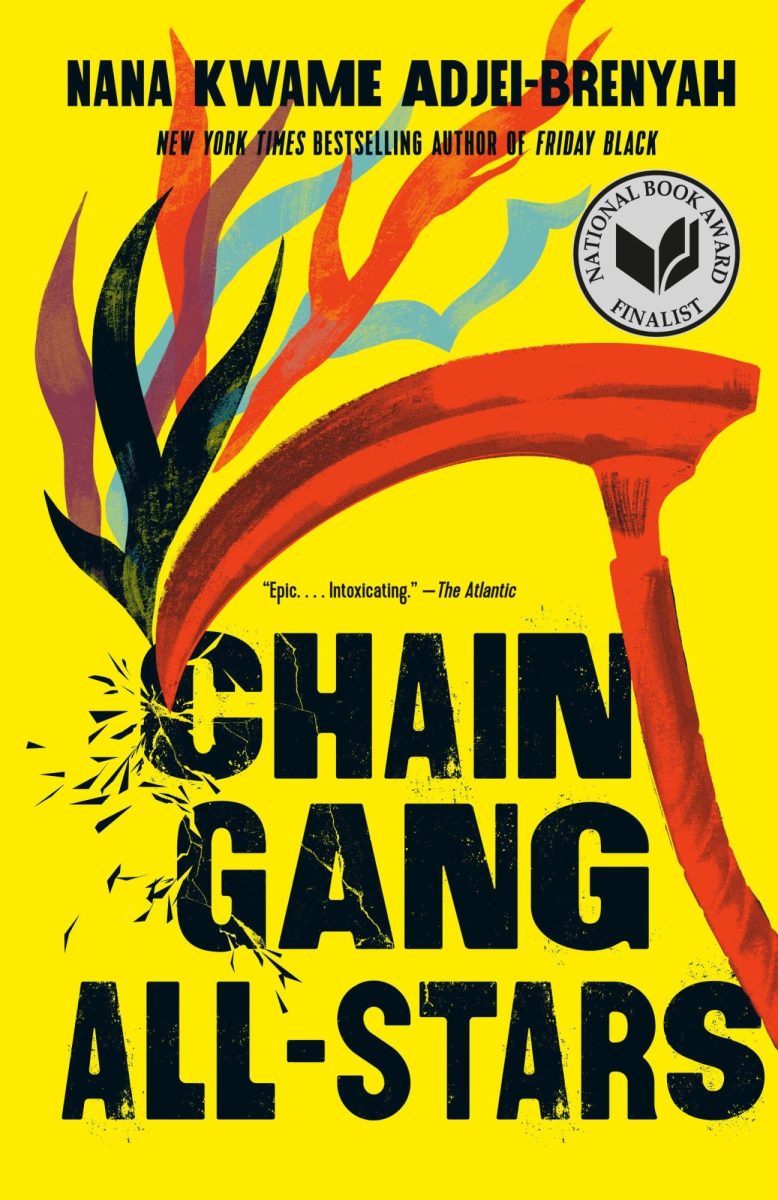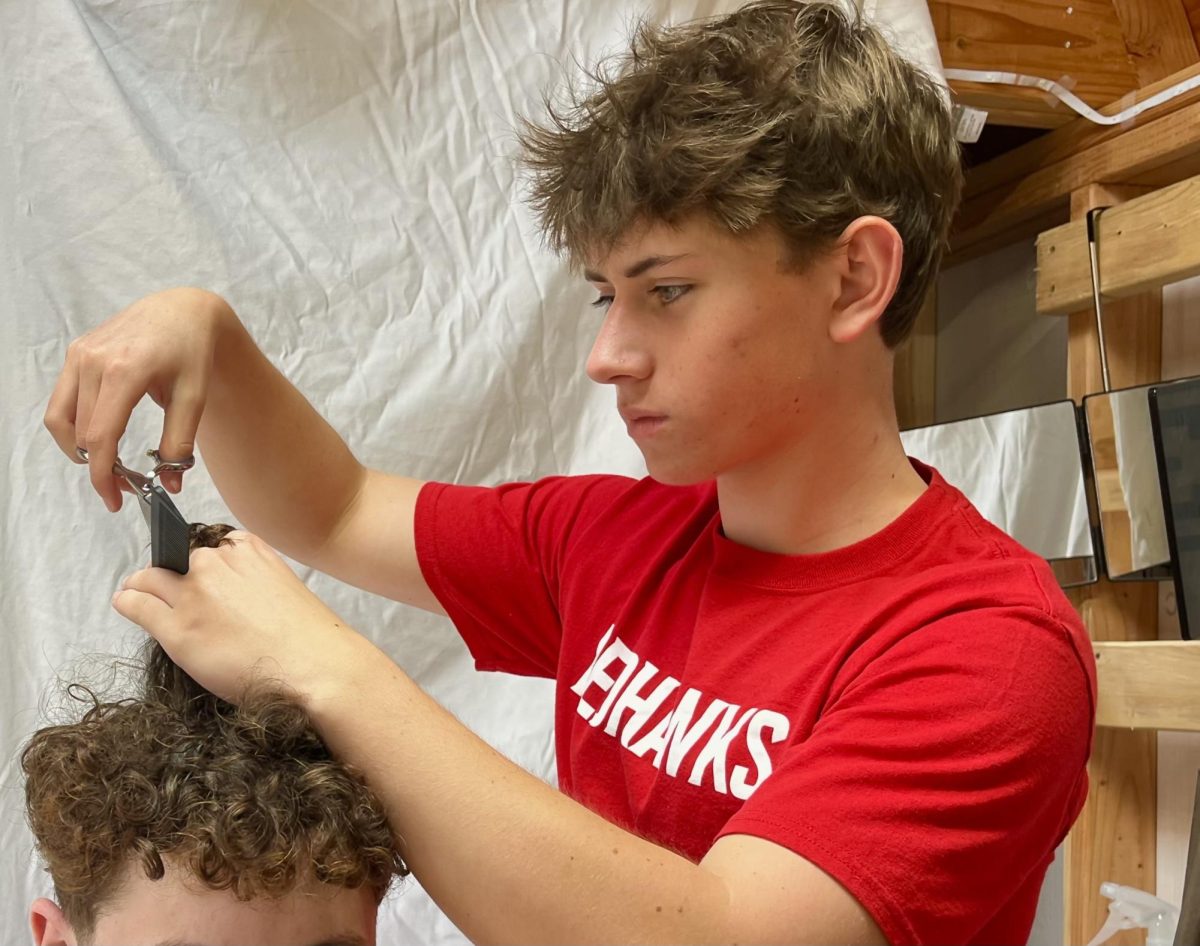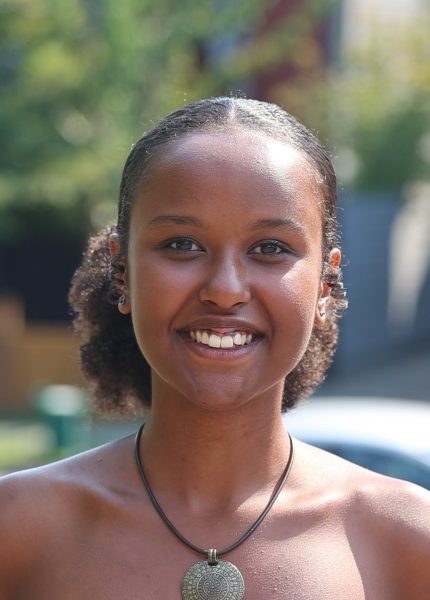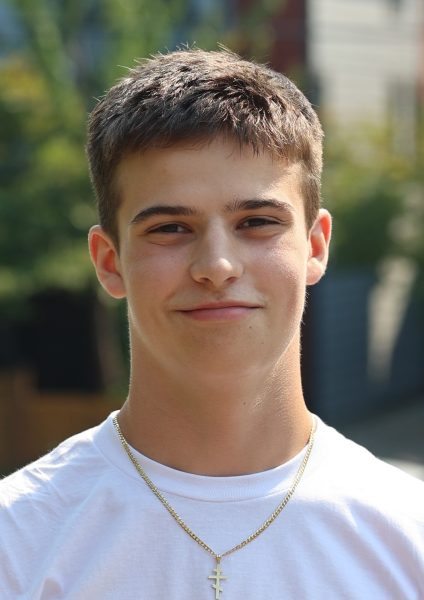The sun feels heavy, the heat exacerbated by the sheer number of bodies pressing flush in the sea of chants and signs held high and proud. Person after person stands tall at the head of the front, passing around a megaphone that continues to amplify the same message:
“Don’t divide us.”
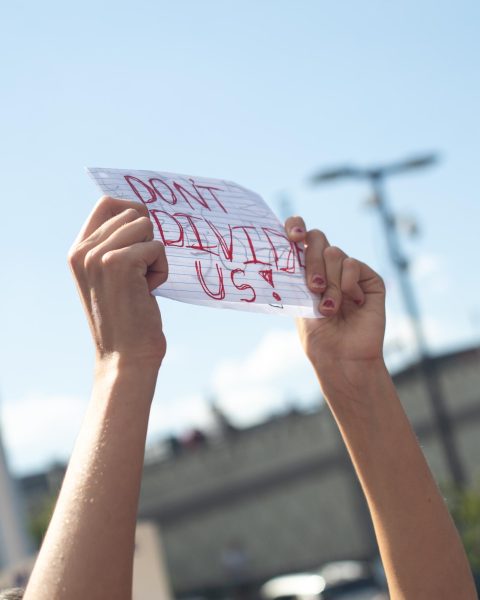
Hundreds of students from across the Seattle Public Schools’ (SPS) District organized a walkout leading to the front steps of the John Stanford Center building in SoDo this past Monday, Sept. 19. The topic: divided lunches.
Officially detailed in an email sent out by Principal Abby Hunt on Tuesday Sept. 9, SPS issued a district policy of splitting every high school’s one lunch period into two, a schedule already adopted by Rainier Beach, Chief Sealth, Cleveland and Franklin High School. Originally thought to come into effect on Monday, Sept. 19, the day of the walkout, that morning Hunt reported a shifted deadline: All high schools must comply by Monday Oct. 6.
“Simply put, I think it’s a stupid change,” sophomore Damian Miller said.
This new schedule, SPS claims, advances equity among students by diminishing the lunch rush, lessening the burden on lunch staff and allowing students to “…find a place to sit…” as described by their website.
“Yes I want equity but how is this equitable for the rest of the kids?” calculus teacher Oana Rus said.
This split lunch policy has been implemented at other SPS high schools because their lunch spaces and staff were unable to accommodate the whole student body in one period.
“I think it is incredibly stupid that the District is making a district wide policy that solves an issue that only exists at a handful of schools,” Miller said.
The district’s claim of equity sparked debate among students and staff on what it means to be equitable vs equal.
“Equity is what everyone needs, right?” Rus said. “Based on where they’re coming from, but equity doesn’t mean ‘let’s provide for this person but take it away from everyone else.’”
“Uniform policies for everyone no matter what,” Rus said defines equality which she believes more closely resembles the impending split lunch policy
“I feel like usually we have a more democratic process… we have a way to approve schedules that involves students and communities aware of it,” Rus said.
BHS teachers like Rus and French teacher Annaick Sturgeon disapprove of the lack of individual school’s autonomy, especially considering how quickly the policy was enacted.
“By the time 4th period started [on Sept. 9] students already knew about it,” Sturgeon said. “We knew at the same time.”
“This was an immediate top down decision that surprised all of us,” said Rus in agreement.
Now people find themselves scrambling to accommodate for this policy with the main concern being clubs, an attribute that many schools take pride in
“Some of them are just going to shut down because they can’t meet at all,” Isabel Hernandez Ingraham High School junior said at the walkout.
Twice the unpaid labor will then be required by additional teachers to keep clubs operating during both lunches.
“Staff is probably still grappling with ‘do I give up twice the amount of time that I don’t really have to begin with to try and keep this thing alive?’” math teacher Kaufman Omar said.
The Boys Volleyball Club, hosted at lunch by Omar, is expected to shut down since less students will be available to attend scrimmages, matches and regular practices. Omar explains that severely reduced student attendance paired with teachers’ already busy schedules leaves little room for compromise.
“We are an academic institution…” Sturgeon said, “But that’s [clubs] part of our culture at Ballard is we have all these opportunities for students to find something that they are passionate about.”
The anticipated effects of hindering this culture BHS has created through its clubs weighs heavy on both staff and students. SPS hasn’t yet delivered any proposed solutions, just mandates.
“Staff really wanna support kids but our bosses are preying on our goodwill,” Omar said.
Now, being forced to compromise on this new district wide policy, SPS students and staff plan for the future.
“It will be disappointing to transition to a two lunch schedule but Ballard is resilient and teachers will make sure that students are getting their needs met as best as we possibly can,” math teacher Robert Dhatt said.
Students and staff are left to deal with the repercussions of this new policy. Teachers aren’t sure how to juggle students’ needs and students struggle to find a balance between their academic and personal lives. Not only are clubs affected but also a student’s ability to meet with teachers, ask for help or schedule retakes or makeups in the case that their teacher’s lunch period doesn’t align with their own.
“There’s policies coming up like ‘offer retakes to the extent possible.’ Well, how is that extent possible anymore?” Rus said.
With these grievances, students and teachers continue to share their voices in any way they can.
“If you really want the change then you gotta go all the way downtown to show them that you care by actually being there,” Miller said.
“Collective voices are like the most important thing,” Omar said. “Y’all taking action as a group, speaking up, showing up… Y’all are incredible for that.”
Some, however, question the necessity of students’ protests on the topic. Are there causes SPS students should be focusing their efforts on instead?
“I feel like maybe we should be protesting more important issues than a split lunch schedule,” Holt said. “There are definitely more pressing matters within our schools or within the world.”
Holt refers to many of the issues brought up in the recent livestreamed school board meeting on Sept. 17 that largely included student voices on gun violence in SPS. They argue that these are the causes SPS students should be uniting in support of.
Regardless, junior Beatrix Holt recognizes students’ ability to organize.
“I really do think that it [the walkout] really shows how much we can have a voice,” Holt said.
For now, clubs continue to meet and staff and students continue to search for a workaround.
“Students and teachers are exceedingly good at creatively solving problems in ways that maybe they shouldn’t have to,” Dhatt said. “And we are, I think, all unified in that here and that unified front means that we are gonna be unified in our solutions.”

